Groves Natcheva Architects transforms an awkward London plot into a modern home
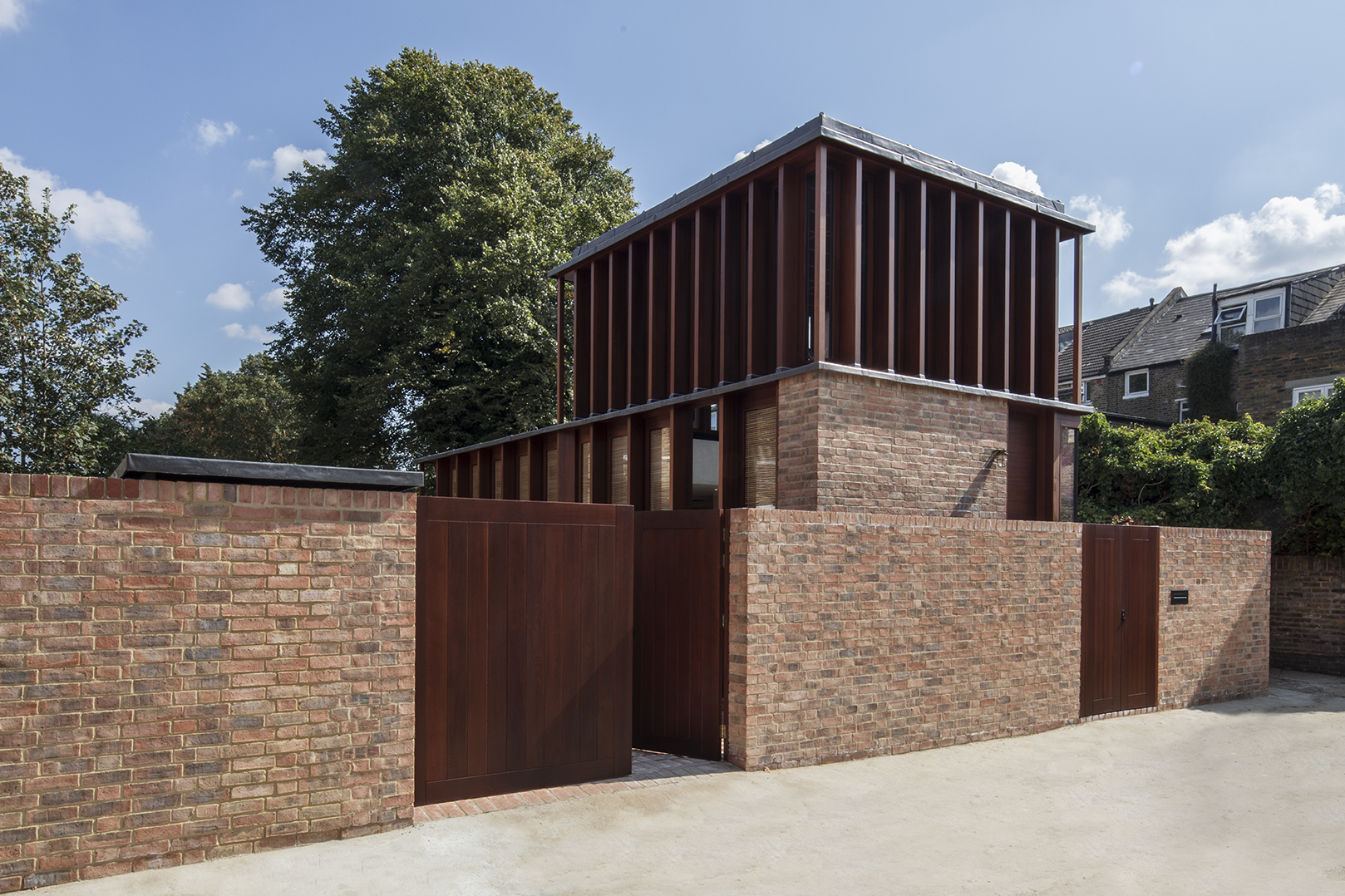
Having a keen eye for spotting opportunities is an essential part of being an architect; especially in a dense and pricey metropolis such as London. Adriana Natcheva and Murray Groves have been practising in the British capital for years, and have proven to be canny operators, finding innovative solutions to challenging situations, especially when housing is concerned.
Their Zog House, designed in 2004 for developer Solidspace, was such an example, built in an awkward North London plot and completed to wide acclaim. Now, more than ten years on, their ongoing ingenuity keeps paying off, with a private client approaching them a few years back for a similar site in the same neighbourhood.
The spot was an urban ‘no-man’s land' sitting between two rear gardens. It had the benefit of street frontage but its close proximity to other buildings and neighbours' windows and rights of light made this site a particularly challenging commission. However, Groves Natcheva Architects jumped at the opportunity to tackle the design and created a contemporary courtyard house, which not only fits perfectly the surroundings, responding to the context's very particular needs, but also goes beyond pure functionality, looking every part the modern home its owner desired.
The client wanted a house to rent or sell, so designing without a specific owner in mind presented an added twist – which the architects saw as an opportunity. ‘[Designing without a specific resident in mind] you can speak to the plausibly universal, to shared elements that lie beyond individual tastes and variations, taking care not to become too abstract', explain Groves and Natcheva. ‘You can also formulate design in a way that makes it adaptive, where the eventual resident's character can reshape it post hoc. And sometimes you can find elements whose force you can be confident will not be resisted.'
The architects excavated one level down, where they situated the house's bedrooms, bathrooms and a study. Two generous courtyards, cut out at the side and rear of the site go far beyond just providing light to the lower floor; their carefuly designed proportions and planting make them feel natural and provide much needed, real and usable outdoor space. Additional al fresco areas include a terrace on the ground level, which can be accessed by a set of elegant, wooden garage doors.
Upon stepping through the main entrance, visitors encounter the design's true pièce de résistance; the open-plan and brightly lit ground floor living spaces. Unable to add windows on street level due to planning requirements, the architects cleverly created large strips of glazing high up towards the roof, crafting a sequence of warm timber frames and windows that bathe the interior with natural light.
A sitting area is planned at the front of the house, with the kitchen placed towards the back. Partly spanning a double height, the space has an almost cathedral-like quality, which is accentuated by the project's material selection of tactile bricks, concrete and wood. Bespoke details throughout, such as feature lighting and sculptural balustrades, further enhance the high design quality of this thoroughly modern home.
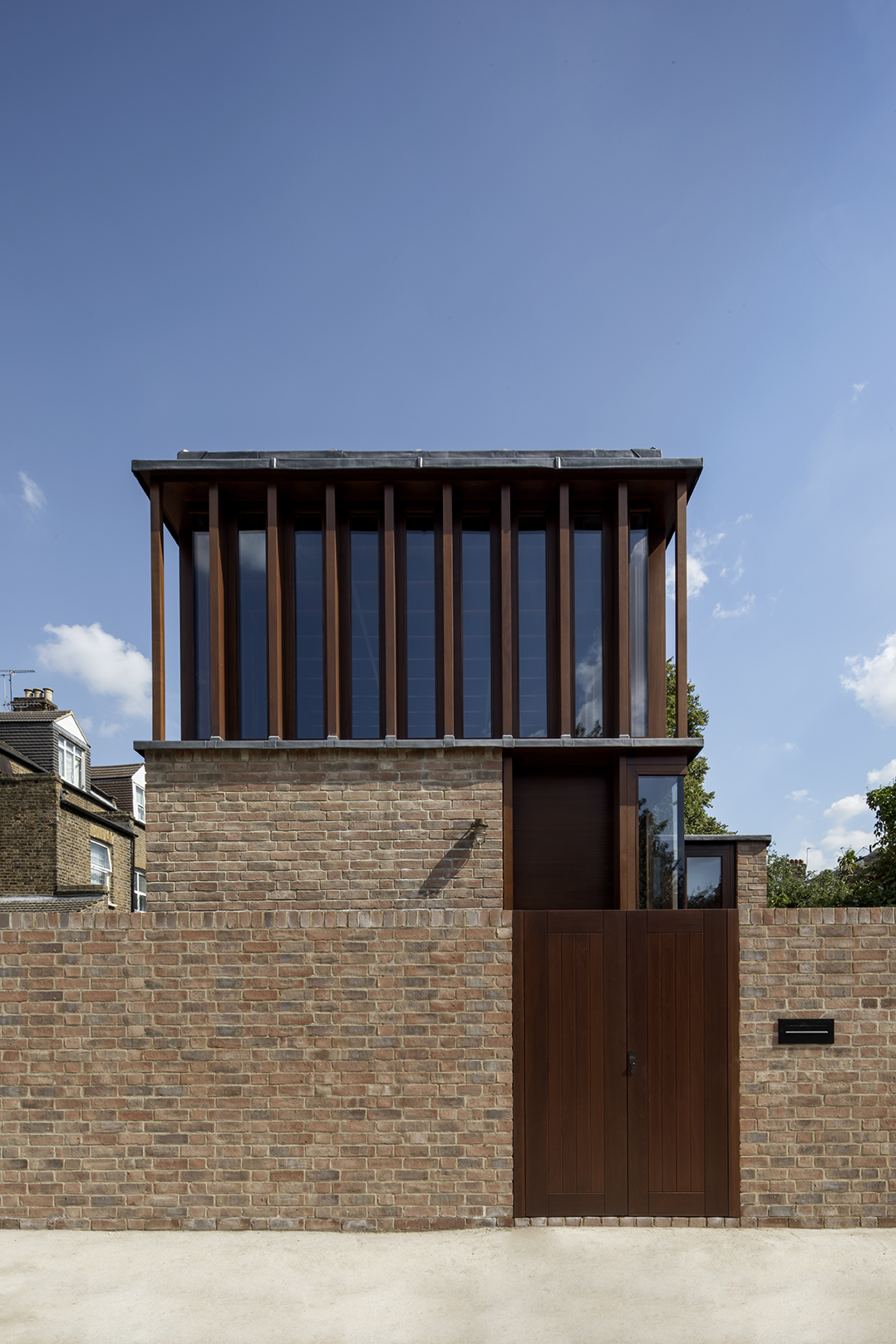
The house was built within an urban ’no-man’s-land’, the space between two rear gardens.
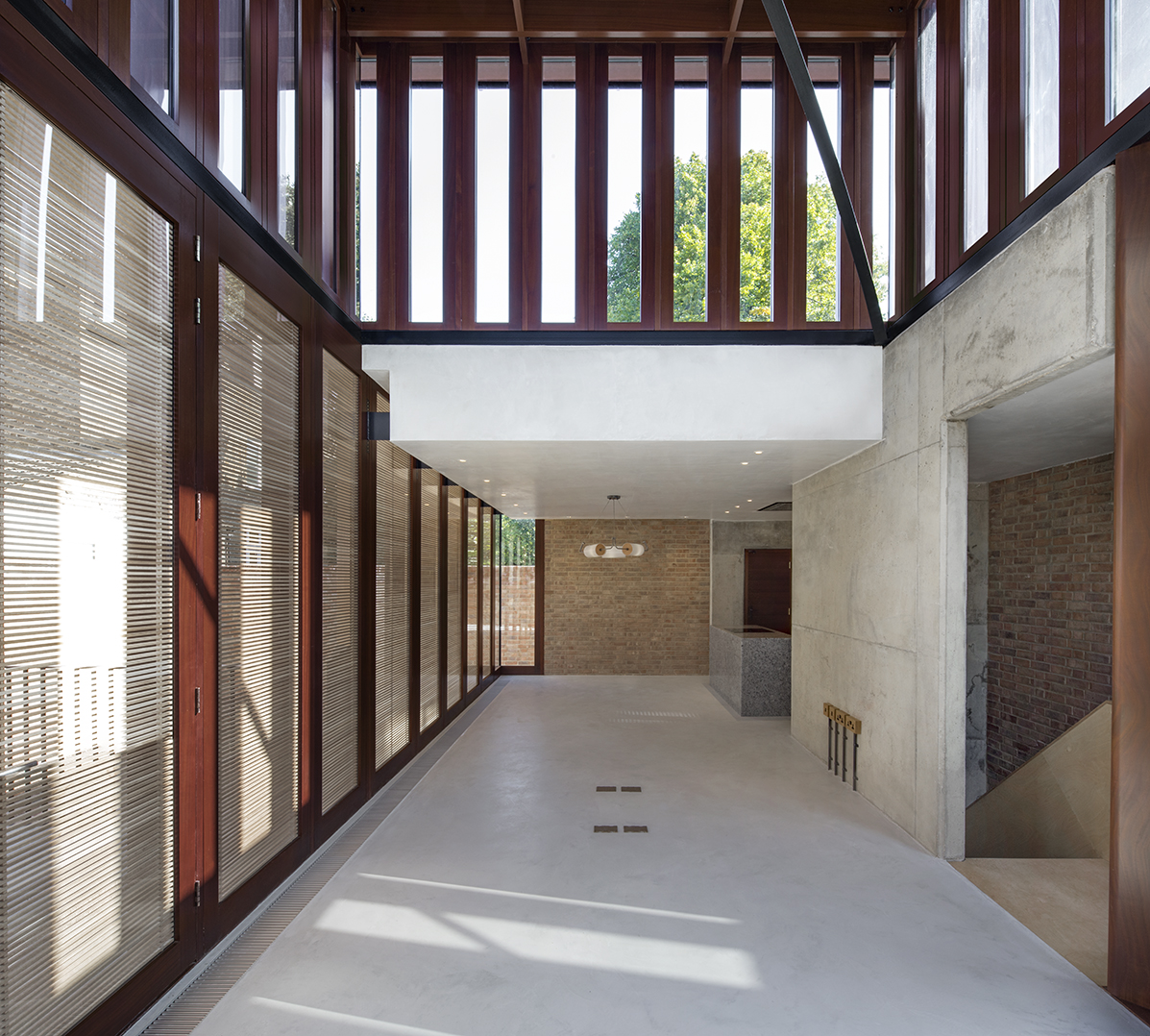
The architects crafted the house out of brick and wood, focusing on its relationship with the outdoors and natural light.
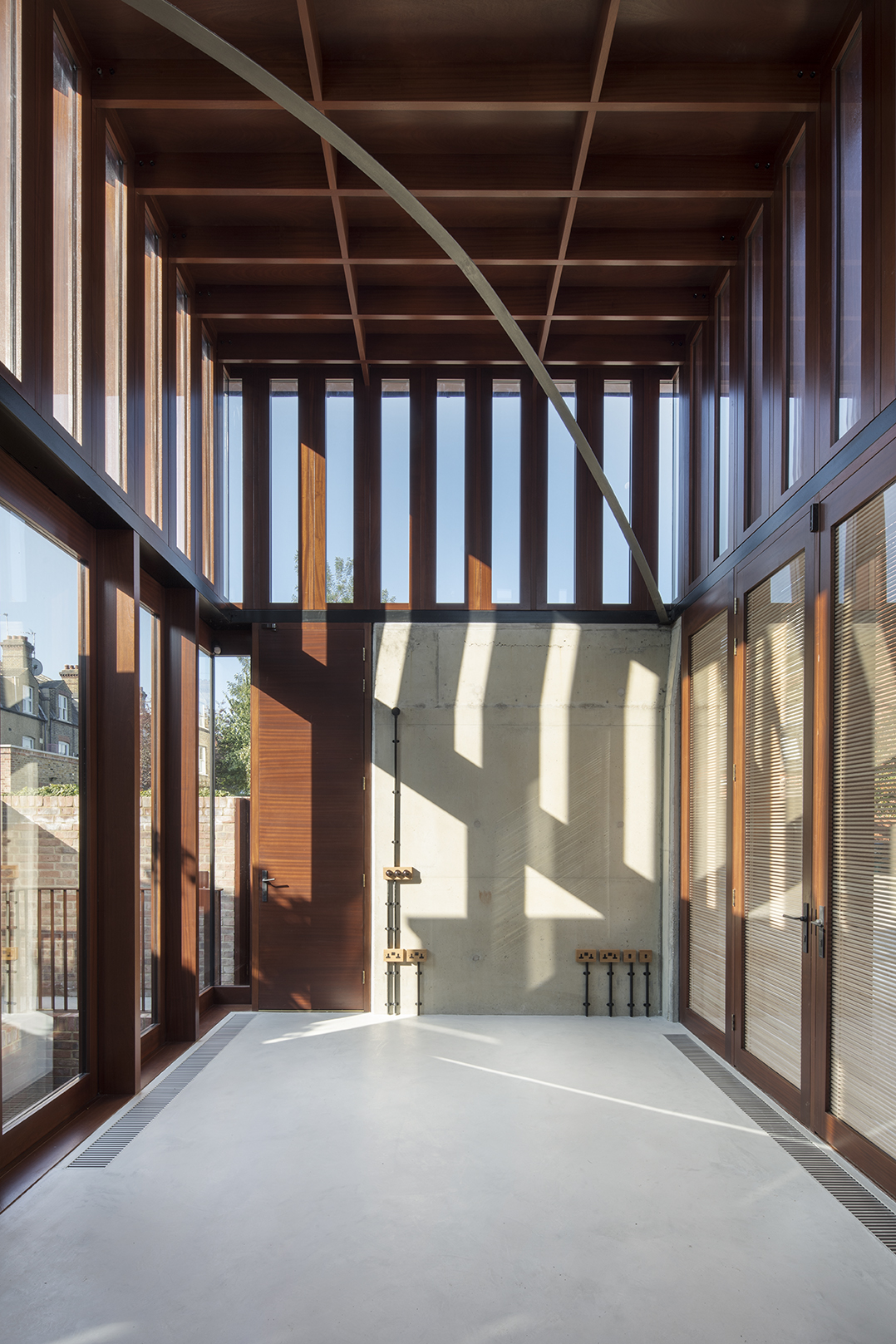
The front facing living spaces are bathed in sunlight through large strips of glazing.
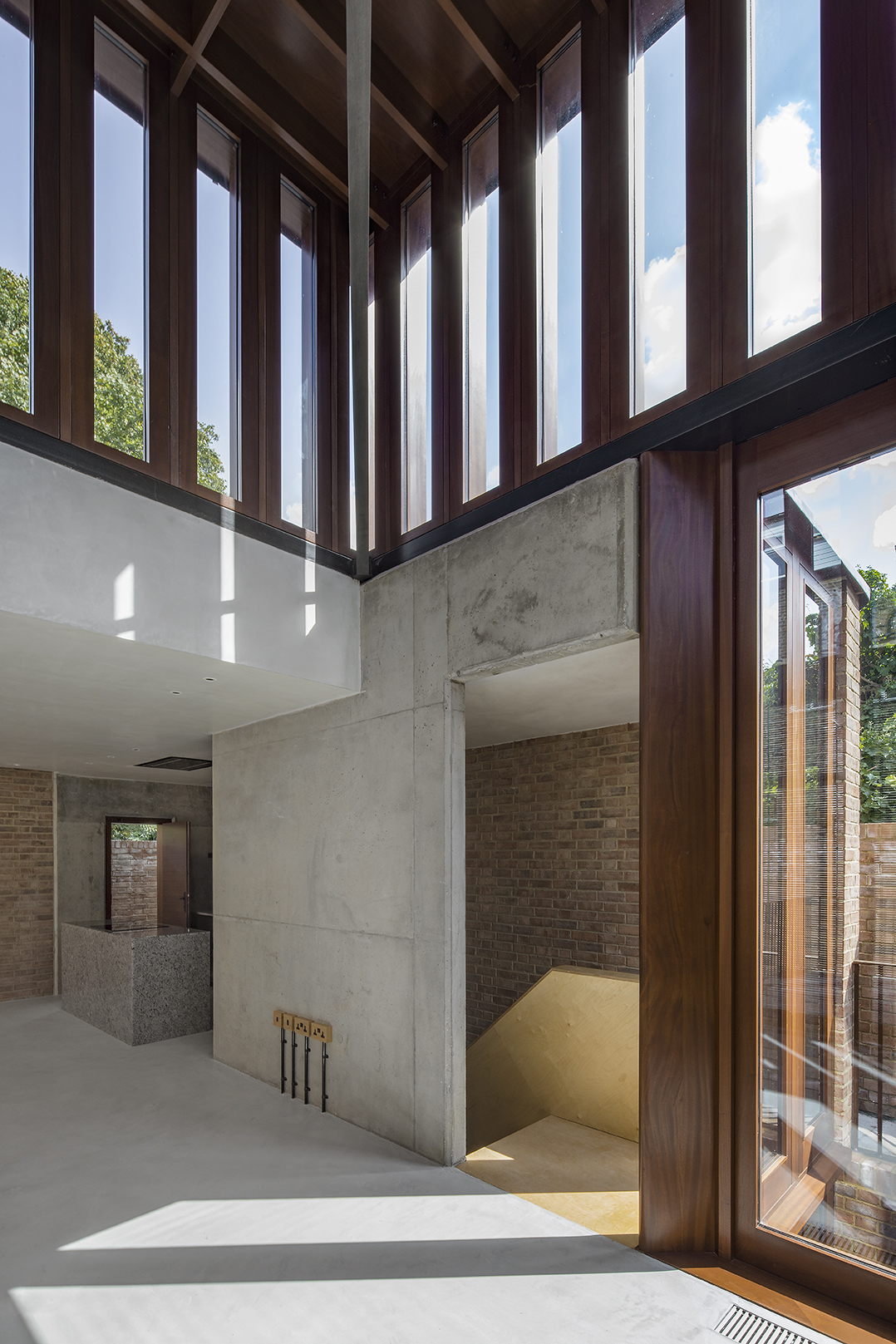
The kitchen is located towards the rear of the plot.
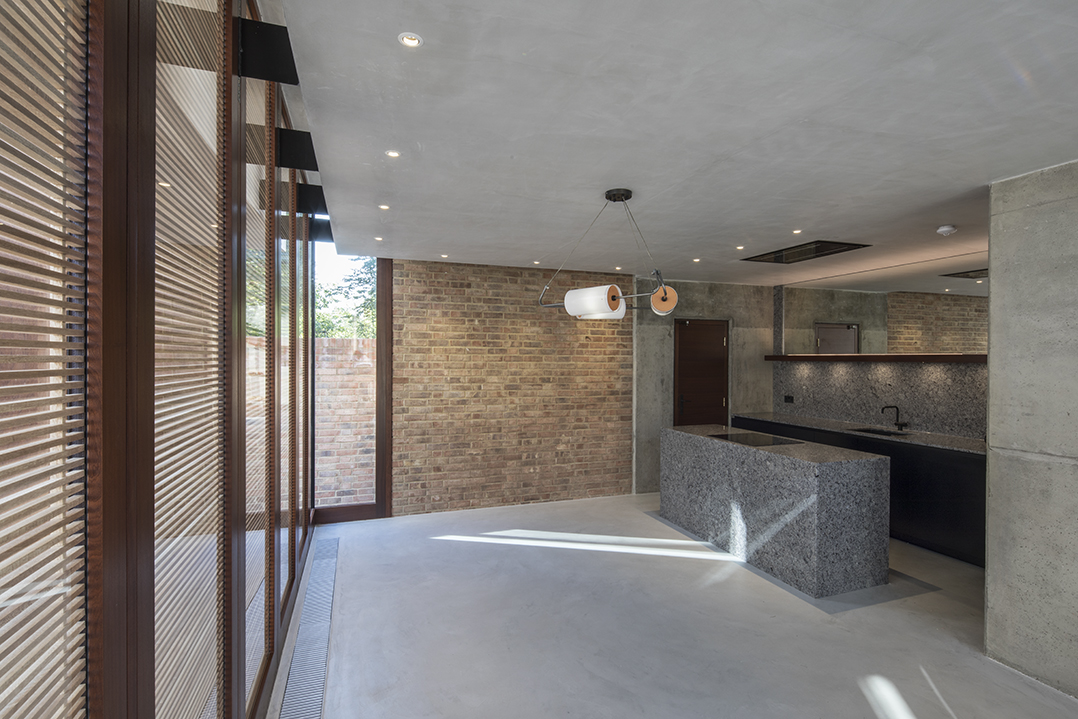
Kitchen and dinning areas look out towards the house’s generous courtyard.
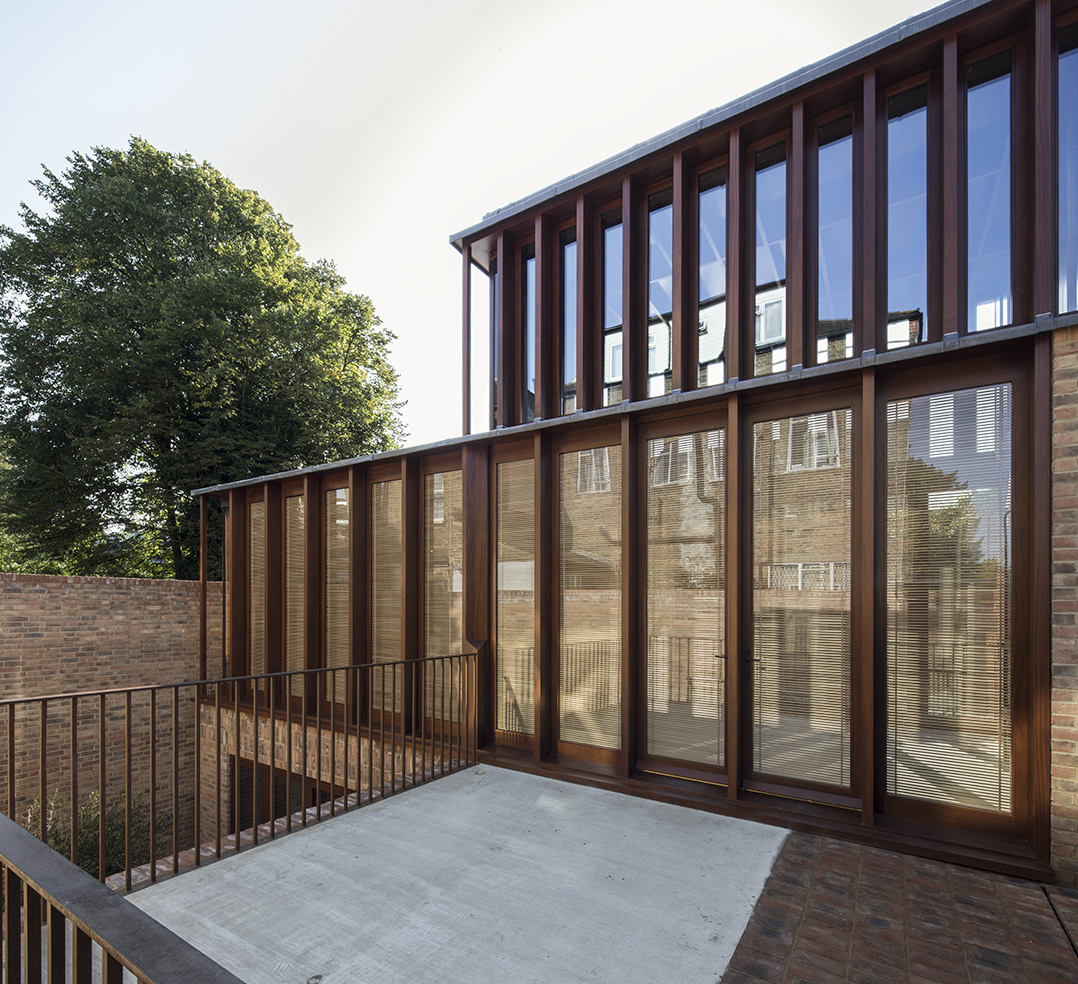
While the house is discreet, without street-level windows at the front, its sides open up towards the courtyards.
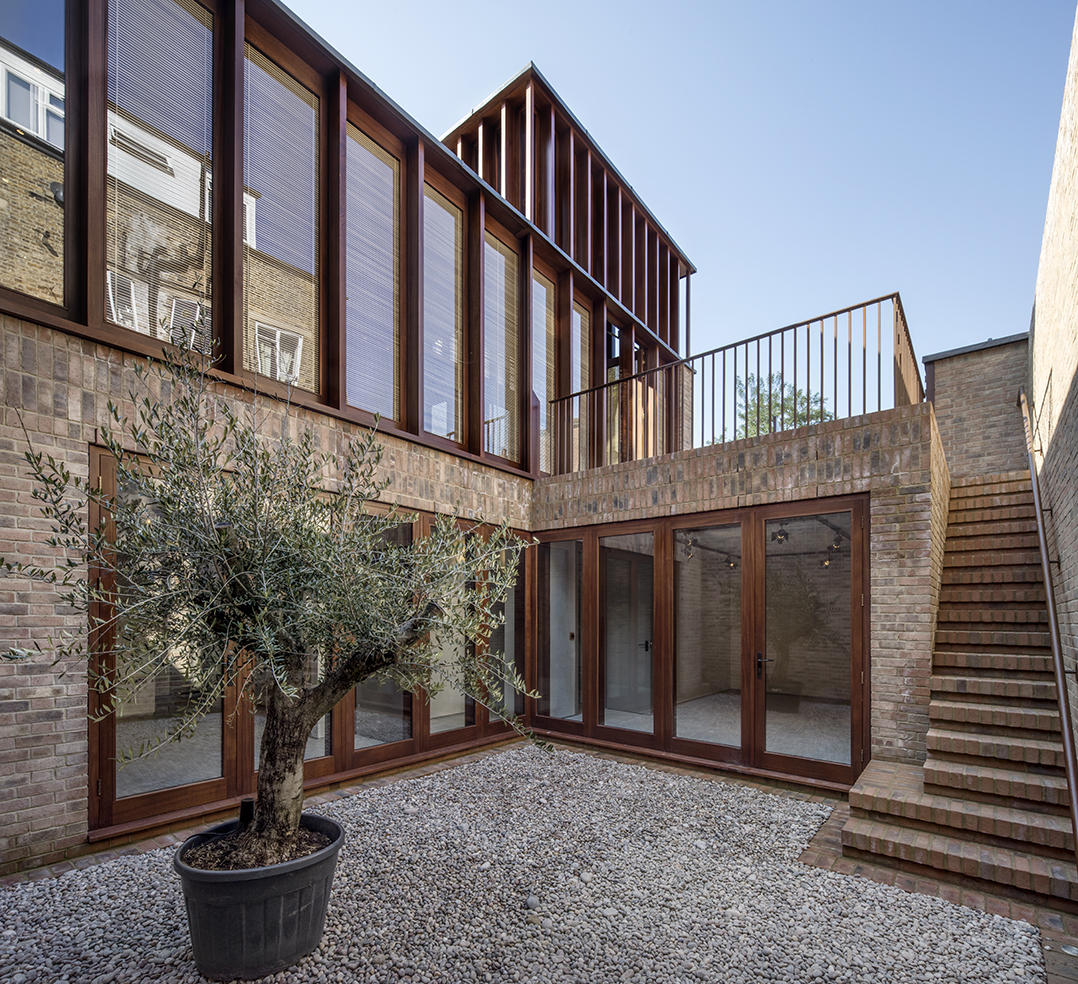
Outside spaces span two levels, one on the ground floor and one below.
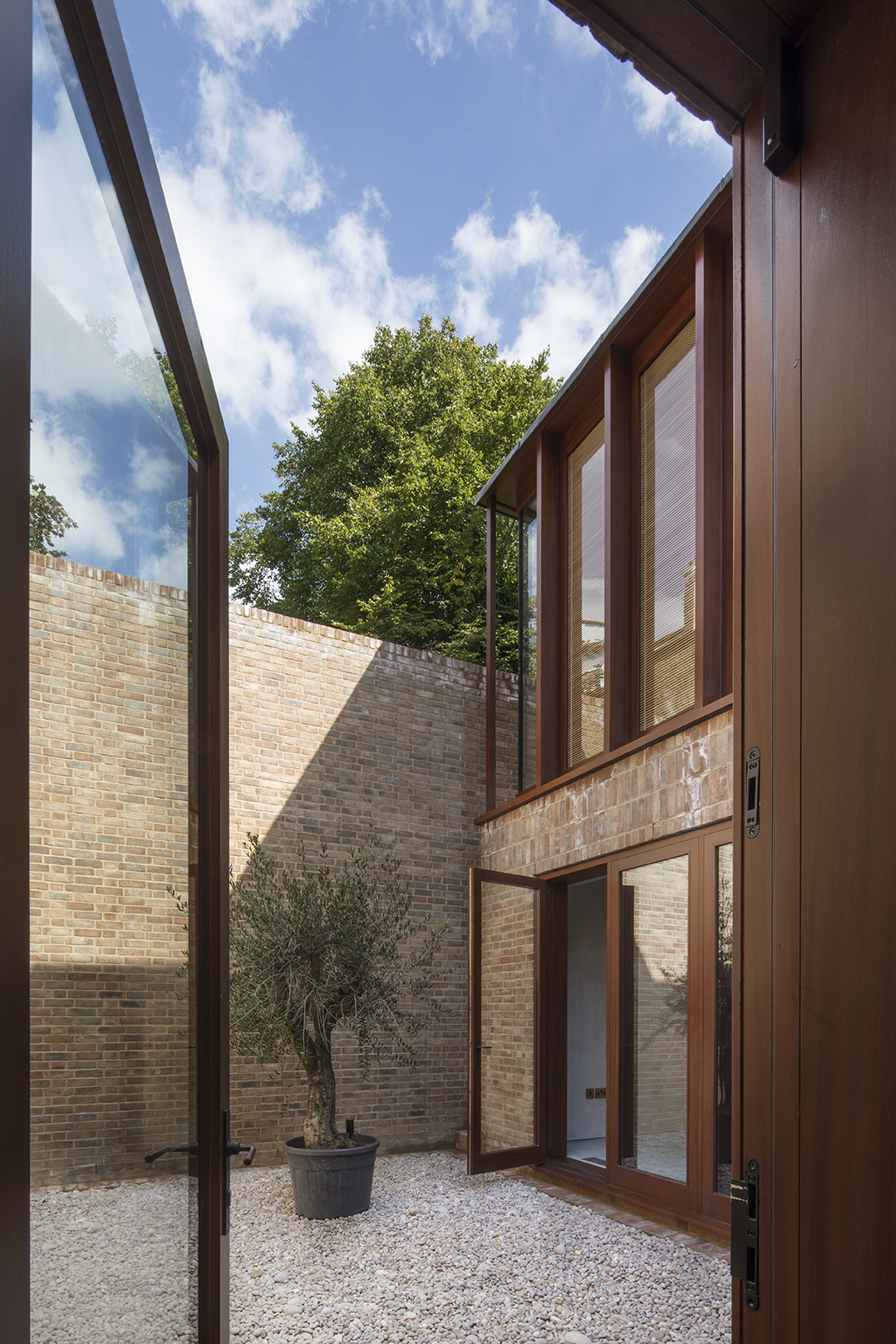
The lower level houses the home’s bedrooms, bathrooms and a study.
INFORMATION
For more information visit the Groves Natcheva Architects website
Wallpaper* Newsletter
Receive our daily digest of inspiration, escapism and design stories from around the world direct to your inbox.
Ellie Stathaki is the Architecture & Environment Director at Wallpaper*. She trained as an architect at the Aristotle University of Thessaloniki in Greece and studied architectural history at the Bartlett in London. Now an established journalist, she has been a member of the Wallpaper* team since 2006, visiting buildings across the globe and interviewing leading architects such as Tadao Ando and Rem Koolhaas. Ellie has also taken part in judging panels, moderated events, curated shows and contributed in books, such as The Contemporary House (Thames & Hudson, 2018), Glenn Sestig Architecture Diary (2020) and House London (2022).
-
 All-In is the Paris-based label making full-force fashion for main character dressing
All-In is the Paris-based label making full-force fashion for main character dressingPart of our monthly Uprising series, Wallpaper* meets Benjamin Barron and Bror August Vestbø of All-In, the LVMH Prize-nominated label which bases its collections on a riotous cast of characters – real and imagined
By Orla Brennan
-
 Maserati joins forces with Giorgetti for a turbo-charged relationship
Maserati joins forces with Giorgetti for a turbo-charged relationshipAnnouncing their marriage during Milan Design Week, the brands unveiled a collection, a car and a long term commitment
By Hugo Macdonald
-
 Through an innovative new training program, Poltrona Frau aims to safeguard Italian craft
Through an innovative new training program, Poltrona Frau aims to safeguard Italian craftThe heritage furniture manufacturer is training a new generation of leather artisans
By Cristina Kiran Piotti
-
 A new London house delights in robust brutalist detailing and diffused light
A new London house delights in robust brutalist detailing and diffused lightLondon's House in a Walled Garden by Henley Halebrown was designed to dovetail in its historic context
By Jonathan Bell
-
 A Sussex beach house boldly reimagines its seaside typology
A Sussex beach house boldly reimagines its seaside typologyA bold and uncompromising Sussex beach house reconfigures the vernacular to maximise coastal views but maintain privacy
By Jonathan Bell
-
 This 19th-century Hampstead house has a raw concrete staircase at its heart
This 19th-century Hampstead house has a raw concrete staircase at its heartThis Hampstead house, designed by Pinzauer and titled Maresfield Gardens, is a London home blending new design and traditional details
By Tianna Williams
-
 An octogenarian’s north London home is bold with utilitarian authenticity
An octogenarian’s north London home is bold with utilitarian authenticityWoodbury residence is a north London home by Of Architecture, inspired by 20th-century design and rooted in functionality
By Tianna Williams
-
 What is DeafSpace and how can it enhance architecture for everyone?
What is DeafSpace and how can it enhance architecture for everyone?DeafSpace learnings can help create profoundly sense-centric architecture; why shouldn't groundbreaking designs also be inclusive?
By Teshome Douglas-Campbell
-
 The dream of the flat-pack home continues with this elegant modular cabin design from Koto
The dream of the flat-pack home continues with this elegant modular cabin design from KotoThe Niwa modular cabin series by UK-based Koto architects offers a range of elegant retreats, designed for easy installation and a variety of uses
By Jonathan Bell
-
 Are Derwent London's new lounges the future of workspace?
Are Derwent London's new lounges the future of workspace?Property developer Derwent London’s new lounges – created for tenants of its offices – work harder to promote community and connection for their users
By Emily Wright
-
 Showing off its gargoyles and curves, The Gradel Quadrangles opens in Oxford
Showing off its gargoyles and curves, The Gradel Quadrangles opens in OxfordThe Gradel Quadrangles, designed by David Kohn Architects, brings a touch of playfulness to Oxford through a modern interpretation of historical architecture
By Shawn Adams